SO SÁNH KẾT QUẢ ĐIỀU TRỊ VIÊM ÂM ĐẠO DO NẤM TRÊN THAI PHỤ BẰNG PHÁC ĐỒ CLOTRIMAZOLE 100MG VÀ CLOTRIMAZOLE 500MG: NGHIÊN CỨU CAN THIỆP CÓ ĐỐI CHỨNG
Nội dung chính của bài viết
Tóm tắt
Đặt vấn đề: Phác đồ Clotrimazole 500mg dùng 1 viên đặt âm đạo 1 lần duy nhất, được chứng minh giúp cải thiện sự tuân thủ điều trị của bệnh nhân và có hiệu quả trong điều trị viêm âm đạo do nấm. Tuy nhiên, chưa có nhiều nghiên cứu so sánh trực tiếp với phác đồ Clotrimazole 100mg. Mục tiêu nghiên cứu: So sánh kết quả điều trị viêm âm đạo do nấm bằng phác đồ Clotrimazole 500mg và 100mg. Đối tượng và phương pháp nghiên cứu: Nghiên cứu can thiệp có đối chứng trên 44 thai phụ đến khám và điều trị viêm âm đạo do nấm tại Bệnh viện Đa khoa tỉnh Bình Dương, được chia làm hai nhóm sử dụng phác đồ Clotrimazole 500mg (n=25) và Clotrimazole 100mg (n=19). Kết quả: Về đặc điểm chung, độ tuổi trung bình là 28,6 ± 7,6, đa phần đã có ít nhất 1 con (75,0%) và có thói quen phơi đồ lót ngoài nắng (72,7%). Trong đó, có 25% bệnh nhân có tiền căn viêm âm đạo do nấm trước đó, 13,6% có sử dụng kháng sinh, 11,4% có đái tháo đường, 11,4% có thụt rửa âm đạo và 11,4% có mặc quần áo chật. Tất cả các đặc điểm đều không có sự khác biệt có ý nghĩa thống kê giữa 2 nhóm (p>0,05). Đánh giá kết quả điều trị tại thời điểm 2 tuần, tỷ lệ soi tươi âm tính ở nhóm sử dụng phác đồ 500mg cao hơn 100mg, lần lượt là 88,0% và 26,3% (p<0,001). Tỷ lệ khỏi bệnh sau 2 tuần điều trị ở nhóm sử dụng Clotrimazole 500mg cũng cao hơn 100mg, lần lượt là 88,0% và 26,3% (p<0,001). Kết luận: Phác đồ Clotrimazole 500mg cho thấy có hiệu quả điều trị viêm âm đạo do nấm cao hơn so với phác đồ Clotrimazole 100mg.
Chi tiết bài viết
Từ khóa
viêm âm đạo do nấm, phác đồ Clotrimazole 500mg, phác đồ Clotrimazole 100mg
Tài liệu tham khảo
2. Loendersloot E. W., Goormans E., Wiesenhaan P. E., Barthel P. J., Branolte J. H. Efficacy and tolerability of single-dose versus six-day treatment of candidal vulvovaginitis with vaginal tablets of Clotrimazole. American Journal of Obstetrics and Gynecology. 1985. 152(7, Part 2), 953-955. doi:https://doi.org/10.1016/S0002-9378(85)80008-9.
3. Phạm Hùng Cường, Nguyễn Thạc Văn, Bùi Chí Thương. Tỷ lệ thành công của phác đồ Clotrimazole liều duy nhất trong điều trị viêm âm đạo do nấm trong thai kỳ tại bệnh viện phụ sản MêKông. Tạp chí Y học Việt Nam. 2024. 538(3), 375-380. doi:https://doi.org/10.51298/vmj. v538i3.9653.
4. Trần Thị Thúy, Phạm Phương Lan, Dương Lan Dung, Nguyễn Thị Ngọc Mai, Nguyễn Văn Liệp. Đặc điểm lâm sàng, cận lâm sàng và thực hành ở thai phụ viêm âm đạo và công tác chăm sóc, tư vấn tại Bệnh viện Phụ sản Trung ương năm 2022. Tạp chí Y học Dự phòng. 2023. 33(3 Phụ bản), 170-178. doi:https://doi.org/ 10.51403/0868-2836/2023/1167.
5. Sobel J. D. Vulvovaginal candidosis. Lancet. 2007. 369(9577), 1961-71. doi:10.1016/s0140-6736(07)60917-9.
6. Lê Chí Công, Phạm Văn Lình, Dương Mỹ Linh. Tình hình, đặc điểm lâm sàng, cận lâm sàng của viêm âm đạo ở thai phụ 3 tháng cuối thai kỳ tại bệnh viện phụ sản thành phố Cần Thơ. Tạp chí Y Dược học Cần Thơ. 2020. (28), 37-44.
7. Akah PA, Nnamani CE, Nnamani PO. Prevalence and treatment outcome of vulvovaginal candidiasis in pregnancy in a rural community in Enugu State, Nigeria. Journal of Medicine and Medical Sciences.2010.1(10),448 - 452.
8. Young G. L., Jewell D. Topical treatment for vaginal candidiasis (thrush) in pregnancy. Cochrane Database Syst Rev. 2001. (4), Cd000225. doi:10.1002/14651858.Cd000225.


